Victorian Garden, Stumpery, and origami sculpture: Missouri Botanical Garden, part 2
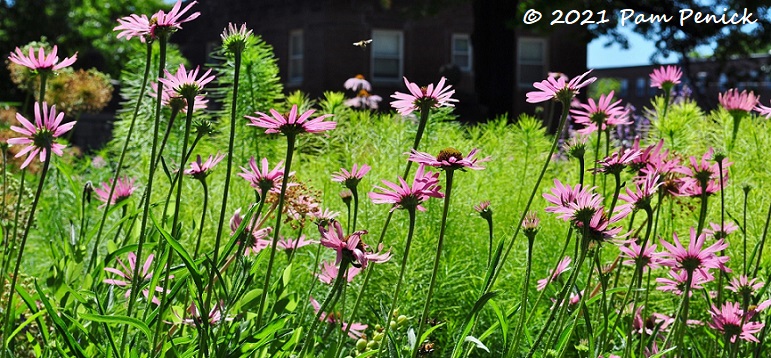
It’s Pollinator Week, so I’ll kick off Part 2 of my visit to Missouri Botanical Garden (MOBOT) with this bee-attracting patch of coneflowers behind one of the administrative buildings.
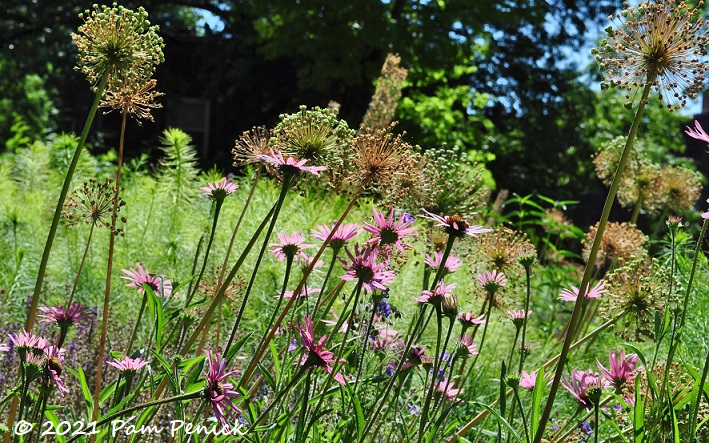
What a pretty little garden of echinacea, allium, and amsonia in a hidden-away spot.
Victorian Garden
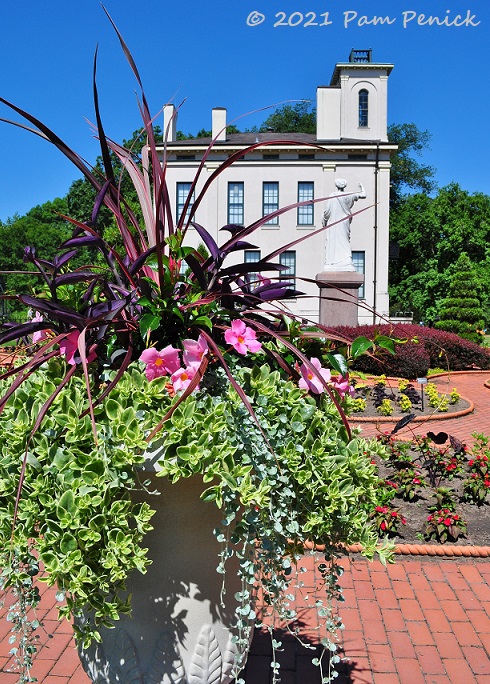
In contrast, the high-traffic spaces in the Victorian District encompass some of the garden’s oldest structures, including Tower Grove House, the country home of MOBOT founder Henry Shaw.
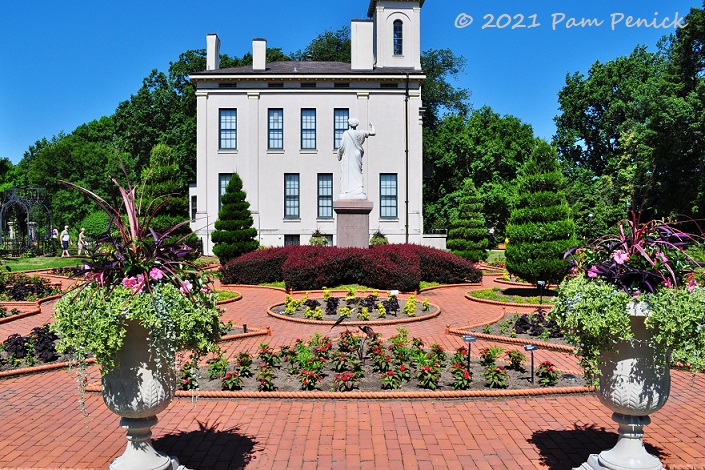
A historically accurate Victorian garden displays geometric beds of colorful annuals and shrubs in a red-brick plaza.
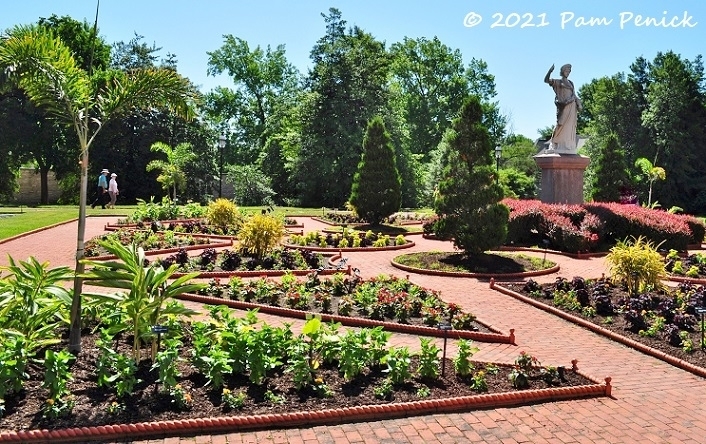
A white marble statue of Juno, acquired by Shaw in 1885, holds court in the center.

Another Victorian staple was the pincushion garden, so named for its circular shape. A number of round beds in a strip of lawn were prepped but unplanted. But a couple were already done, like this pretty star-shaped design of turquoise and rosy-hued succulents. Got a lot of succulent cuttings? Here’s your solution!
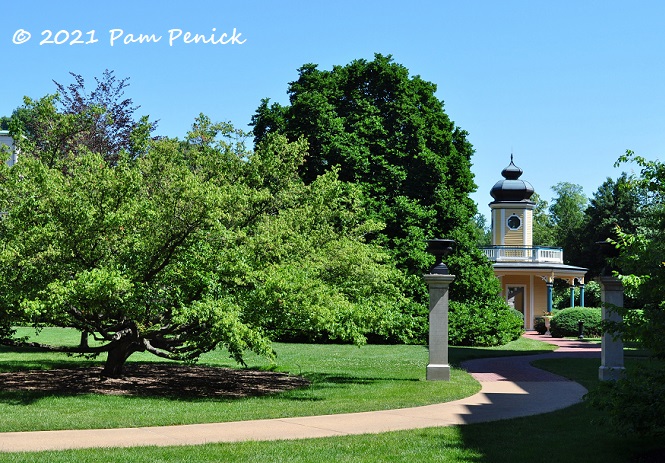
At the edge of the Victorian District, an onion-domed observatory tower (the upper story was closed) makes a handsome viewpoint among stately specimen trees.
Origami sculptures
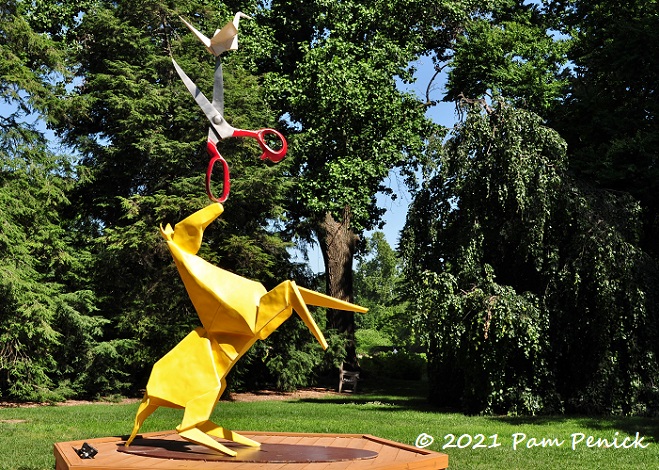
Jennifer and Kevin Box’s origami sculptures, part of the temporary exhibition Origami in the Garden, entertained us throughout the gardens. Here’s an equine variation on rock-paper-scissors.
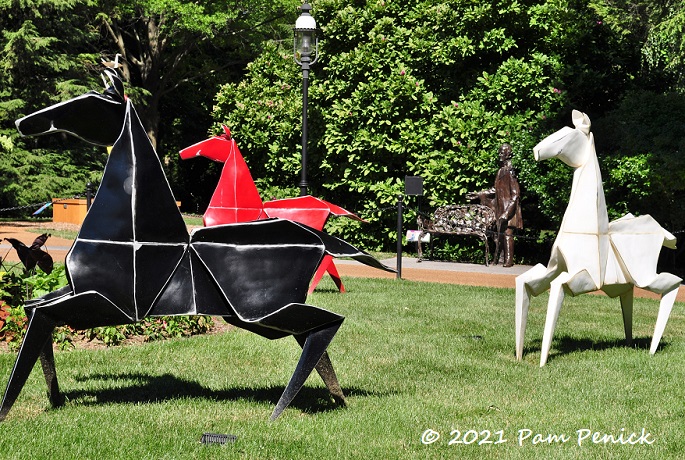
Other origami horses were prancing across a lawn.
Historical homes and Shaw’s mausoleum
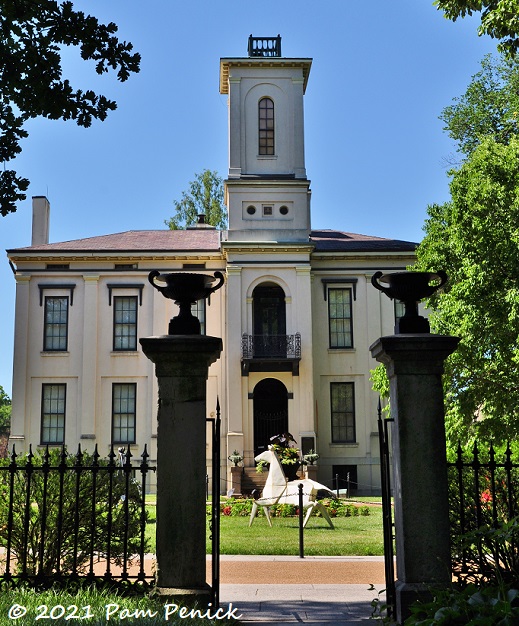
Tower Grove House was built in 1849 as Henry Shaw’s country residence, and it’s where he planned the botanical garden after retiring with his hardware-store fortune. Today it’s a museum, but due to covid it was closed during our visit.
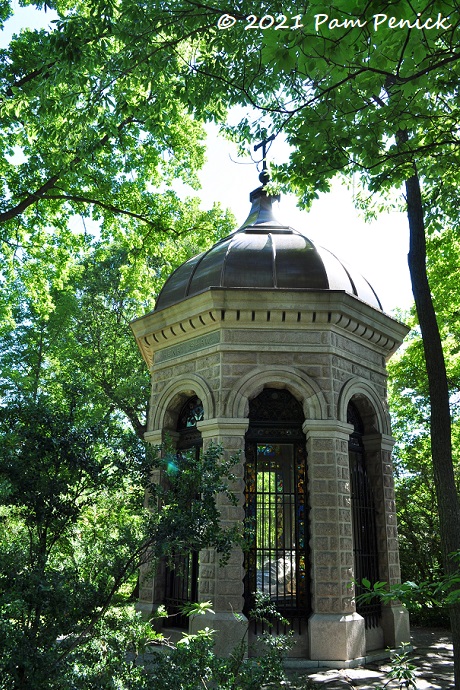
Shaw constructed his own mausoleum just a few dozen yards away…
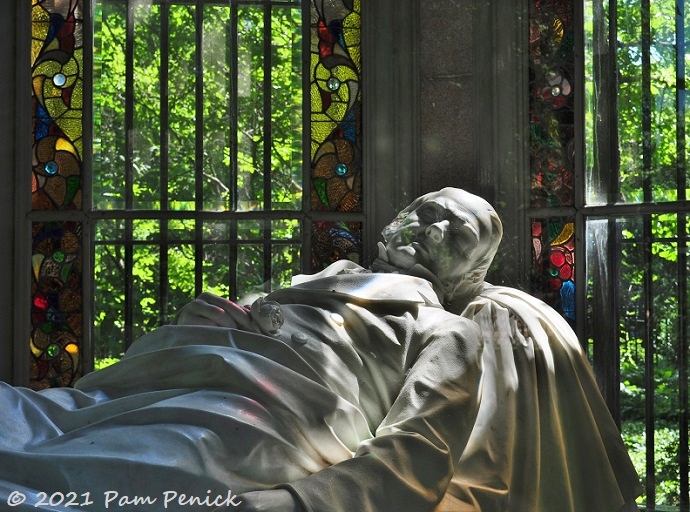
…and posed for the marble effigy that lies within. Shaw died in 1889.
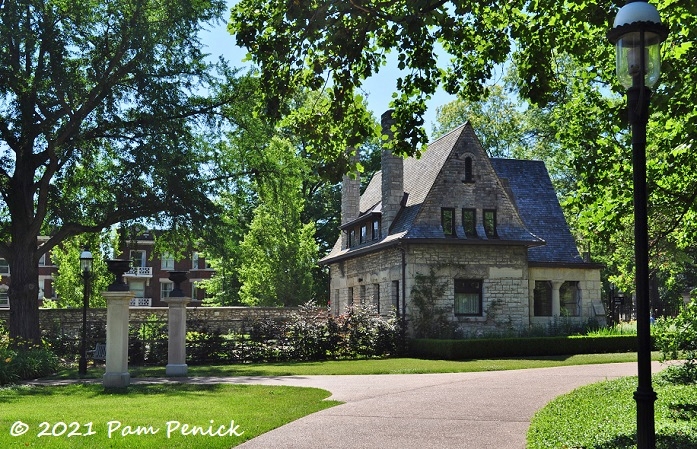
A gatekeeper’s cottage, Herring House, stands nearby at the garden’s former entrance.
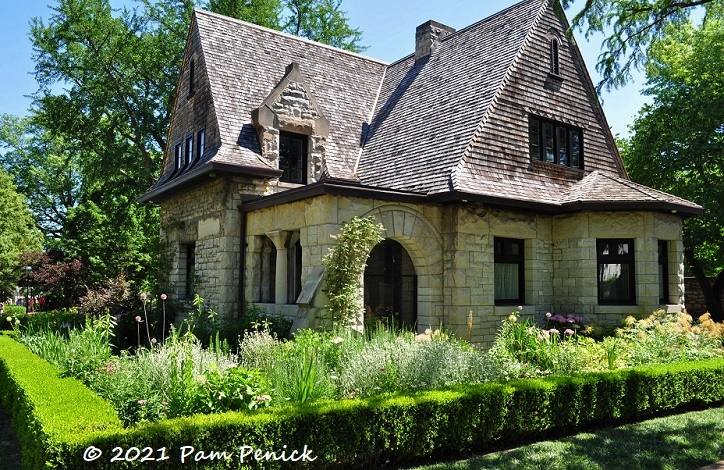
A charming cottage garden surrounds it, but it’s closed to visitors, so I could only peek over the hedge.
Stumpery
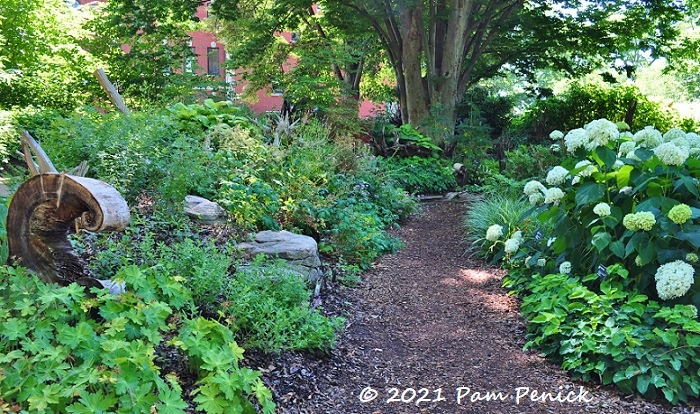
Another Victorian design, coming back into favor — I’ve seen a few on my garden travels — is the stumpery. I really enjoyed MOBOT’s Stumpery, a shady woodland garden that incorporates old logs, sections of tree trunks, and upturned root balls.
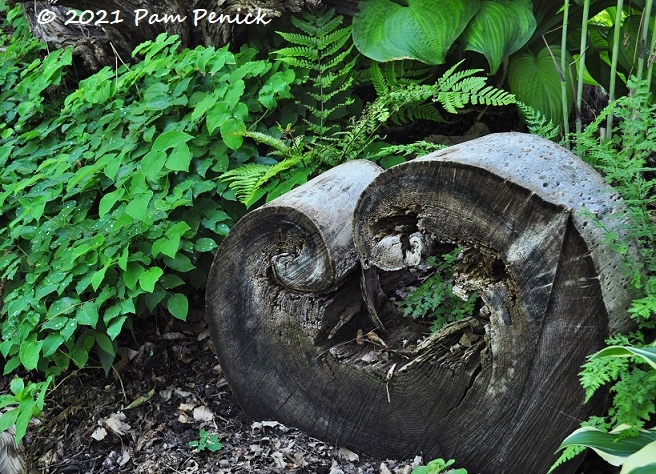
Scrolled cross-sections of tree trunks resemble curled strips of paper among ferns and hosta.
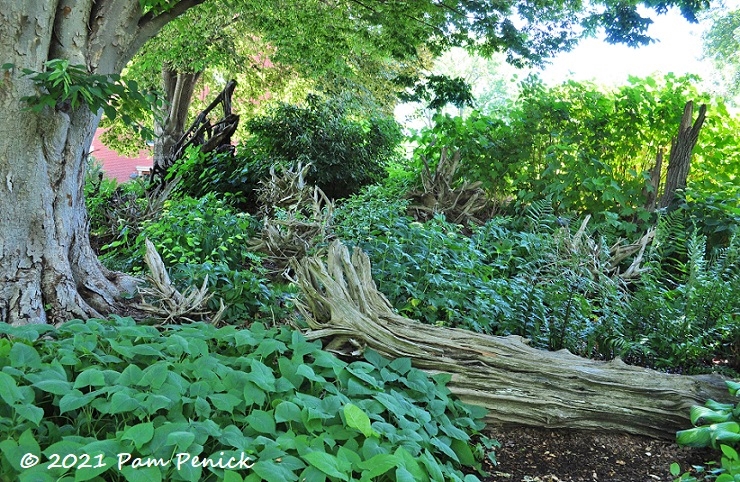
A bony log at the end of one path seems to stand in as a bench.
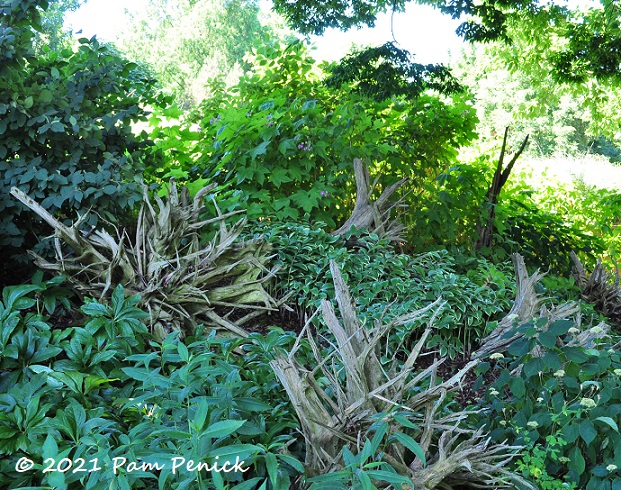
Displayed on a slope, upturned and tentacled tree roots appear amid lush foliage. My photos really don’t do these justice. They look bigger and more dramatic in real life and are quite beautiful as natural sculpture and a reminder of trees that have passed on.
Grove of dawn redwoods
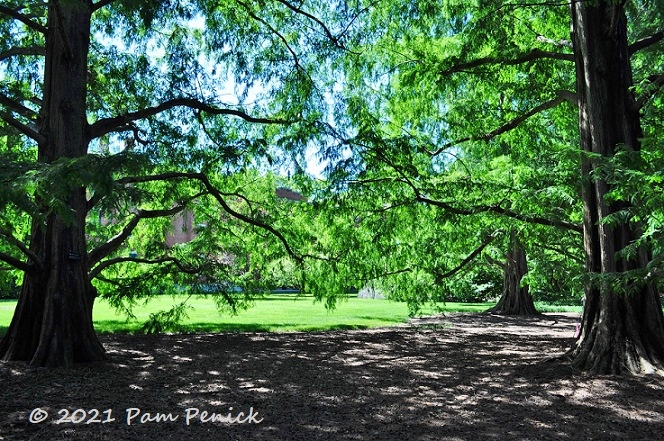
An impressive group of living trees along another path provided welcome shade on this hot day. These giants are dawn redwoods.
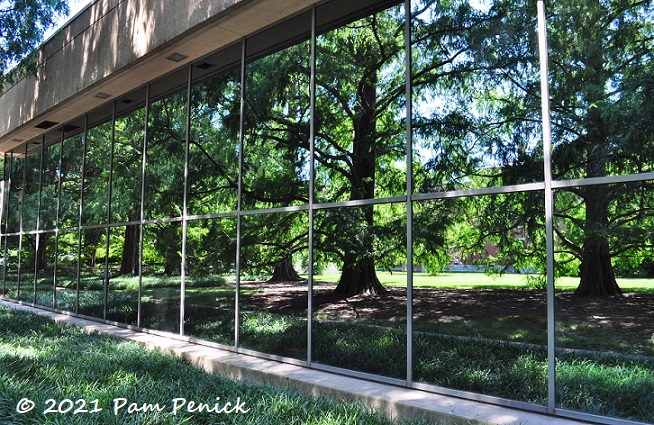
Their reflections in the mirrored windows of an adjacent building create the illusion of a double colonnade.
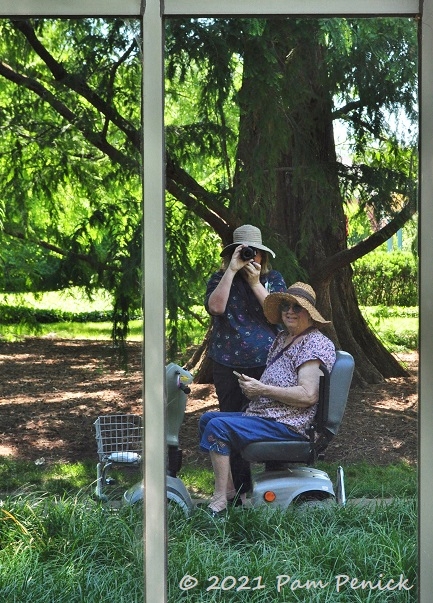
The mirrored windows also make an irresistible selfie spot.
English Woodland Garden
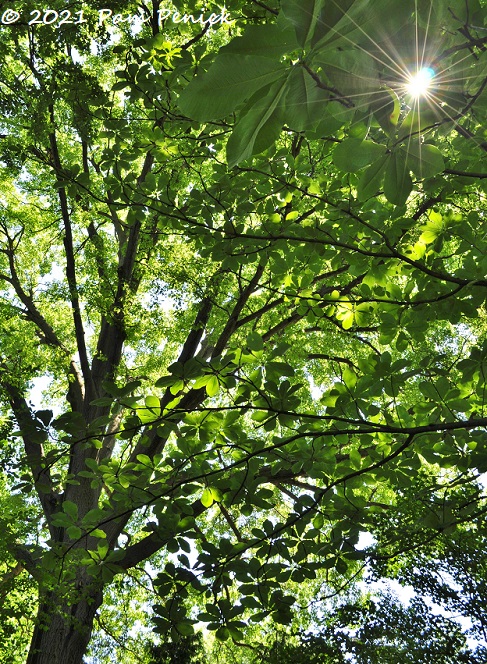
In the English Woodland Garden, we sat in the shade for a while, enjoying green dappled sunlight.
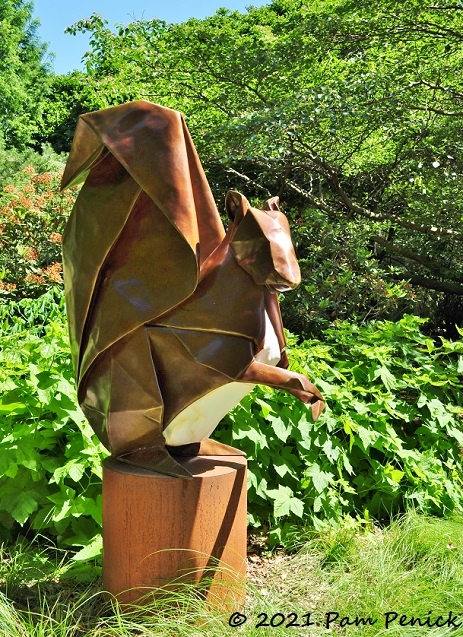
When we emerged, an origami squirrel gathering an origami acorn greeted us.
Up next: The beautiful and serene Japanese Garden. For a look back at the Climatron conservatory, Ottoman Garden, and other gardens near the entrance, click here.
__________________________
Digging Deeper
Come learn about gardening and design at Garden Spark! I organize in-person talks by inspiring designers, landscape architects, authors, and gardeners a few times a year in Austin. These are limited-attendance events that sell out quickly, so join the Garden Spark email list to be notified in advance; simply click this link and ask to be added. Season 8 kicks off in fall 2024. Stay tuned for more info!
All material © 2025 by Pam Penick for Digging. Unauthorized reproduction prohibited.


You always do a great job at capturing the essence of the places you visit, Pam, including the little things (like photogenic tree stumps many people would miss). I love the origami sculptures. The effigy was a little creepy but then that’s a marker of a different time.
Thank you, Kris! And yes about the effigy. Funny that people wanted to be remembered that way. With a public garden this old, you get to see the passage of time in terms of the taste in ornamentation and memorials.
Pam, sad to admit but I’ve used Plant Finder for years without knowing about the estate and gardens behind this resource. Thanks for the wonderful descriptions, images and personal perspective. Hope all is well with you.
I’m glad you’re enjoying discovering MOBOT along with me, Susie. I’d heard good things about the garden for years, so I was eager to get up there and see for myself.
Such fun to see MOBOT through your eyes! It was 100F each of the 3 July days I was there. I recall a deafening drone of cicadas. And I remember the fireflies when I went back one night for a music concert. Magical.
That does sound magical. A nighttime visit to a public garden is a rare opportunity. How nice to be able to go back when it wasn’t so hot.
I love the reflections in the mirrored windows!
I wonder if they planned for that effect or if it was a happy coincidence with the trees.
I’ve talked to a number of people who have worked there over the years and the mirrored building was definitely designed for the location.
I’m glad to know that, Chris. Thanks for sharing!